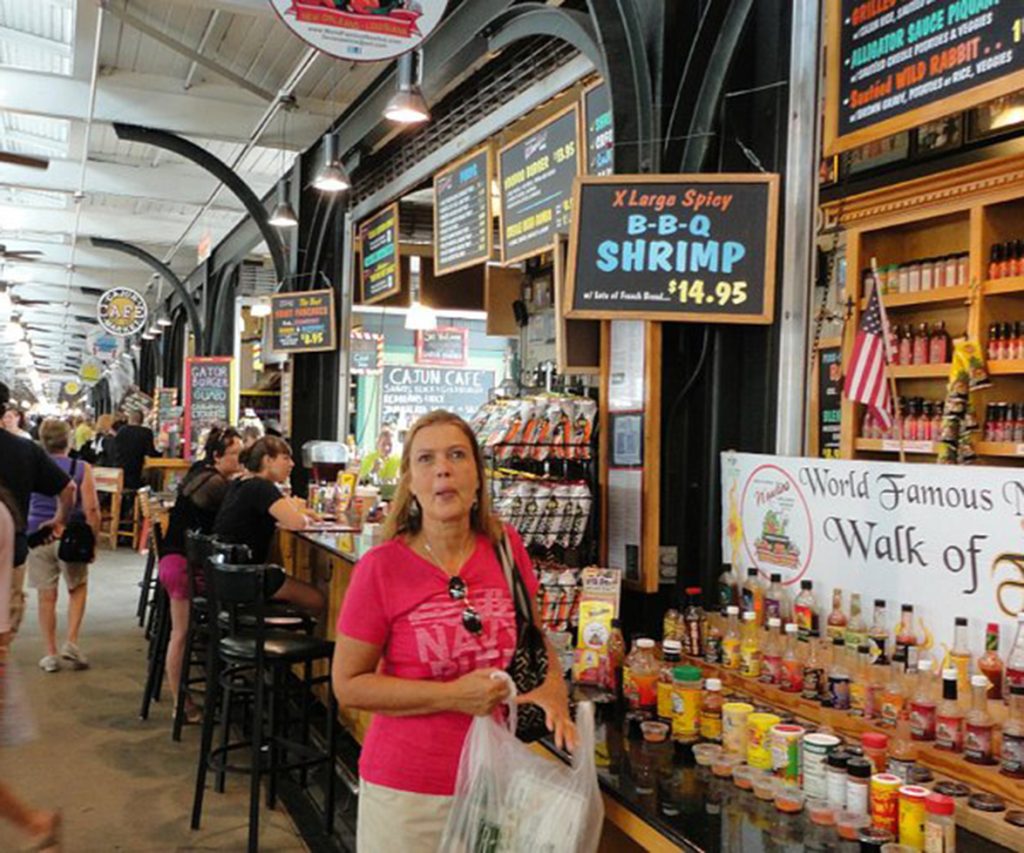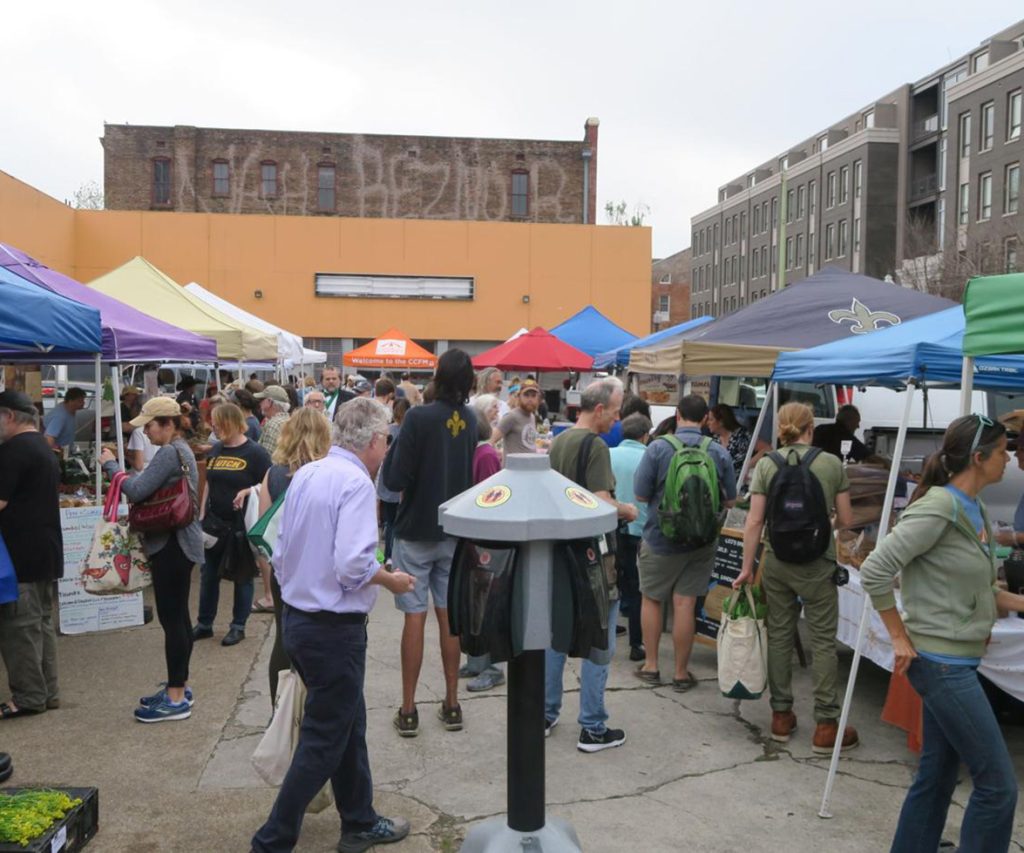New Orleans is a city unlike any other. Beyond the jazz, the lively streets of the French Quarter, and the aroma of freshly baked beignets, there’s an artistic heart that pulses through every corner of the city. Over my years of travel, I’ve discovered that the city’s artisan shops and markets are among the most vibrant and authentic expressions of New Orleans’ culture. From handmade jewelry to intricately painted Mardi Gras masks, from local paintings to uniquely crafted home décor, these treasures tell stories of the city, its history, and its people.
During my trips, I’ve explored a combination of modern shopping centers and traditional markets. Each has its own flavor and experience, and together, they create a comprehensive picture of the artisan culture of New Orleans. Let me take you through the best places to shop for local souvenirs, share my experiences, and provide detailed tips to make your visit enjoyable and meaningful.
Modern Artisan Shops and Shopping Centers
- The Shops at Canal Place
Location: 333 Canal St, New Orleans, LA 70130
Overview: Nestled at the edge of the French Quarter, Canal Place might initially feel like a luxury shopping mall, but it houses hidden gems crafted by local artisans. With its clean, climate-controlled interior, it offers a comfortable space to explore while enjoying city views.
Shops to Explore:
• Cane & Table: This shop specializes in handcrafted cocktail accessories and local spirits. I was immediately drawn to their hand-blown glass absinthe fountains ($85) and artisanal bar tools. The staff patiently explained the process of glassblowing and how each piece is slightly unique, making it a one-of-a-kind souvenir.
• Leontine Linens: Known for beautifully embroidered table linens inspired by New Orleans’ culture, including Mardi Gras patterns and fleur-de-lis motifs. Prices range from $50 to $120, and the quality of craftsmanship is evident in every stitch.
Experience: As I wandered through Canal Place, I appreciated the calm compared to the crowded streets of the French Quarter. The staff in each store were eager to share the story behind the items. For instance, I learned that some cocktail tools were crafted from reclaimed wood sourced locally, making each piece environmentally friendly and unique.
Pros:
• Comfortable indoor environment, ideal during hot summer days or rainy weather.
• A curated mix of luxury and artisan items.
• Helpful, knowledgeable staff.
Cons:
• Prices lean toward the higher side compared to street markets.
• Some shoppers may miss the lively, chaotic charm of traditional markets.
Tips:
• Visit in the mid-morning to avoid cruise ship crowds.
• Ask if stores offer workshops or live demos — I once saw a glassblowing demonstration that was fascinating.
- Magazine Street Boutiques
Location: Magazine St, New Orleans, LA (stretching through Uptown)
Overview: For a longer, more exploratory shopping experience, Magazine Street is unparalleled. Stretching over six miles, this street features boutiques, antique stores, and artisan shops offering one-of-a-kind handcrafted items.
Shops to Explore:
• Marrero’s Art Gallery: Specializes in paintings and sculptures by local artists. I purchased a mixed-media painting ($120) that vividly captured the spirit of the French Quarter, with bright colors and subtle textures that evoke the energy of the streets.
• Gallery Orange: Famous for its hand-painted Mardi Gras masks ($35–$150). I was amazed by the delicate beadwork and attention to detail, making them true works of art rather than typical tourist souvenirs.
Experience: Walking Magazine Street is a full sensory experience — the smell of fresh coffee, the chatter of locals, the occasional street musician. The gallery owners were welcoming, explaining the techniques behind each mask and painting. It felt like stepping into a local artist’s studio rather than just a shop.
Pros:
• Wide selection of unique, handcrafted souvenirs.
• Opportunities to engage directly with local artists.
• Beautiful street lined with cafes and eateries for breaks.
Cons:
• Spread over miles, requiring a lot of walking or car rides.
• Some boutiques close earlier than expected, usually around 6–7 pm.
Tips:
• Wear comfortable shoes for walking.
• Pair shopping with a brunch stop at a nearby café — I recommend the Petit Lion Café for a mid-shopping coffee.
• If you see something you love, consider purchasing immediately; some items sell out quickly due to their handcrafted nature.

- French Market Shops
Location: 1008 N Peters St, New Orleans, LA 70116
Overview: The French Market is the epitome of New Orleans’ vibrant street life. This historic market combines food vendors, crafts, and artisan shops, offering both convenience and an authentic cultural experience.
Shops to Explore:
• Dreux Handcrafted Jewelry: I fell in love with a fleur-de-lis necklace ($45), expertly hand-beaded with Swarovski crystals. Each piece was slightly different, reflecting the artisan’s creativity and skill.
• Gumbo Souvenirs: Offers hand-painted ceramic tiles ($20–$80) depicting scenes from New Orleans’ rich cultural heritage. The craftsmanship was meticulous, and I appreciated the stories behind each design.
Experience: The French Market is bustling and vibrant, filled with the scent of local foods and the sounds of street musicians. Speaking with the artisans was a highlight; I even had a brief chance to try stamping techniques for a ceramic tile under the guidance of the vendor.
Pros:
• Wide variety of items for different budgets.
• Strong cultural immersion through direct interaction with artisans.
Cons:
• Can be crowded, especially on weekends.
• Some stalls sell mass-produced items; you need to look carefully for genuine crafts.
Tips:
• Visit early to avoid crowds.
• Bring small bills for easier transactions.
- Royal Street Galleries
Location: Royal St, French Quarter, New Orleans, LA 70130
Overview: Royal Street is famous for its art galleries, antique shops, and artisan boutiques. It’s perfect for those seeking high-quality, locally made souvenirs.
Shops to Explore:
• Royal Crafts & Gallery: Offers hand-carved wooden figures and pottery ($30–$200). I picked up a small pelican sculpture, a beautiful keepsake that embodies the city’s wildlife and culture.
• NOLA Artisan Works: Specializes in locally made candles, soaps, and textiles ($15–$60). Each product is made from local ingredients, often incorporating Louisiana flora and natural fragrances.
Experience: The galleries on Royal Street exude a calm charm. Unlike the bustling French Market, these galleries allow for a more intimate shopping experience. I spent hours speaking with artists and learning about their creative processes.
Pros:
• Authentic artisan shops with high-quality handmade products.
• Opportunity to learn directly from the creators.
Cons:
• Higher price point for some items.
• Street parking is limited; consider walking or using a ride-share service.
Tips:
• Visit mid-afternoon to enjoy quieter galleries.
• Ask for gift wrapping; many shops provide elegant packaging for travelers.
Traditional Markets and Local Gems
For a truly authentic experience, traditional markets are unbeatable. The energy, music, and artisan interactions make every visit memorable.
- Frenchmen Art Market
Location: Frenchmen St, New Orleans, LA 70116
Schedule: Thursday–Sunday evenings
Highlights:
• Local paintings, handcrafted jewelry, masks, and more.
• Street performances enhance the shopping experience.
Experience: I purchased a Mardi Gras mask ($45) while listening to live jazz. The vendor explained the cultural significance of the colors and beadwork, making the purchase not just a souvenir but a connection to the city’s traditions.
Pros:
• Lively, immersive atmosphere.
• Direct interaction with artisans.
Cons:
• Crowded during peak evenings.
• Prices reflect handcrafted quality.
Tips:
• Arrive before 7 pm to beat the crowds.
• Cash is preferred for smaller items.
- Crescent City Farmers Market
Location: 900 Convention Center Blvd, New Orleans, LA 70130
Schedule: Saturdays, year-round
Highlights:
• Local crafts, artisanal goods, and seasonal products.
• Opportunities to purchase food souvenirs, like jams and pralines.
Experience: I picked up a hand-stitched tote bag ($35) and chatted with the artisan about the inspiration behind her designs. Sampling local honey and pralines added another layer to the experience, connecting food and craft culture.
Pros:
• Supports local artisans directly.
• Seasonal variety ensures unique finds.
Cons:
• Some artisans appear only seasonally.
• Can be busy; parking may require extra planning.
Tips:
• Pair a shopping visit with brunch or coffee nearby.
• Bring small bills to make transactions easier.

My Personal Recommendations and Tips
- Prioritize authenticity: Always ask if items are locally made.
- Timing: Weekdays are quieter; weekends are more vibrant.
- Cash is king: Many vendors do not accept cards.
- Engage with artisans: Their stories add meaning to your souvenirs.
- Shipping options: Consider shipping fragile items home.
My Artisan Journey in New Orleans
Reflecting on my time exploring New Orleans’ artisan shops and markets, I realize that the true magic lies not only in the items themselves but in the stories and hands that brought them to life. Each shop and market felt like stepping into a living gallery — where creativity is celebrated, traditions are honored, and every piece carries a part of the city’s soul.
What struck me most was the diversity of artistry. From the delicate beadwork of Mardi Gras masks to hand-thrown pottery, from vibrant local paintings to intricately designed jewelry, the talent here is staggering. I found myself pausing at each stall, not just admiring the craftsmanship but engaging in conversations with artisans who generously shared their inspiration, techniques, and personal journeys. These interactions added a layer of meaning to my purchases — they weren’t just souvenirs, they were stories captured in tangible form.
Another highlight was the sense of community. Many artisans know each other, collaborate, and celebrate each other’s successes. Visiting a market or gallery felt like entering a close-knit neighborhood where every piece told a narrative that connected the past and the present. I particularly loved seeing how seasonal events, like the Frenchmen Art Market evening showcases or Crescent City Farmers Market summer craft fairs, brought people together — locals mingling with visitors, all united by an appreciation for creativity.
My advice is simple: immerse yourself fully. Take your time. Ask questions. Watch demonstrations when possible. Capture photos for memories, but leave room to experience the artistry in real time. Don’t rush from shop to shop; instead, let the rhythm of the streets guide you, and allow surprises to shape your journey. Some of my most treasured moments were unexpected — discovering a miniature hand-painted jazz trumpet in a tiny boutique or sampling a hand-crafted praline while chatting with its creator at the farmers market.
Remember that these artisans thrive on your support. Purchasing directly from them not only gives you a unique souvenir but sustains their craft and the cultural fabric of New Orleans. Every item you take home is a piece of the city’s heart — a reminder of its music, its vibrancy, and the people who dedicate themselves to keeping its traditions alive.
So, whether you’re a seasoned collector, a first-time visitor, or someone simply seeking a meaningful memento, New Orleans’ artisan scene offers something unforgettable. From modern shopping centers to historic streets and bustling markets, every corner is an opportunity to connect, appreciate, and bring a piece of the Crescent City home with you.
Visiting these shops and markets isn’t just shopping; it’s a journey through New Orleans itself — its culture, creativity, and soul — and it’s an experience I carry with me long after leaving the city streets behind.
